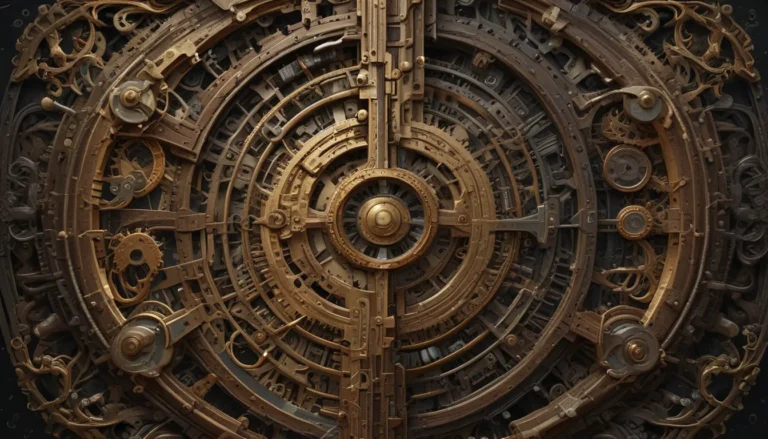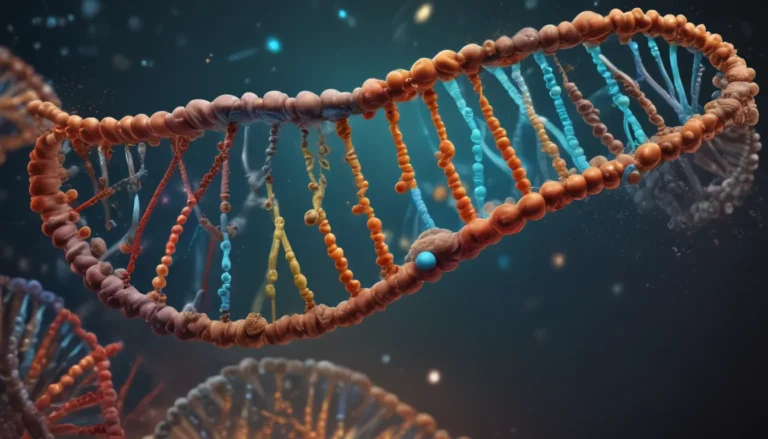A Note About Images: The images used in our articles are for illustration purposes only and may not exactly match the content. They are meant to engage readers, but the text should be relied upon for accurate information.
From the intricate dance of cell division to the stability of our genetic material, centromeres play a pivotal role in the world of genetics and cell biology. These enigmatic structures hold the key to understanding how our chromosomes are faithfully transmitted during each round of cell division. In this article, we will delve deep into the fascinating realm of centromeres, exploring their structure, function, and significance in the intricate tapestry of life.
Key Takeaways
- Centromeres: The traffic controllers of chromosomes, essential for accurate cell division.
- Mysteries: Scientists continue to uncover the secrets of centromeres, impacting genetics and cell biology.
Centromeres: The Architects of Cell Division
Centromeres are not mere bystanders in the process of cell division; they are the architects that ensure the precise distribution of chromosomes to daughter cells during mitosis and meiosis. Without centromeres, the symphony of cell division would be incomplete, resulting in chaos rather than order.
Specialized Regions of Chromosomes
Sitting at the heart of the chromosome, centromeres are specialized regions defined by specific DNA sequences and unique protein structures. These characteristics enable centromeres to bind and orchestrate the spindle fibers responsible for separating chromosomes during cell division.
The Balancing Act of Genetic Material
During cell division, centromeres oversee the separation of sister chromatids, the mirror images of each chromosome. This meticulous process guarantees that each daughter cell inherits an equitable share of genetic material from the parent cell, maintaining harmony within our genetic blueprint.
Guards of Chromosome Stability
Centromeres act as sentinels, safeguarding the stability of chromosomes and preventing aberrations that could lead to genetic disorders. Their vigilance ensures that chromosomes remain intact, free from rearrangements or anomalies that threaten the integrity of our genetic code.
The Dynamic Nature of Centromeres
Far from static entities, centromeres undergo constant changes in structure and composition throughout the cell cycle. These transformations are essential for securing chromosome attachment and segregation during cell division, highlighting the dynamic essence of centromeres in the orchestration of life’s intricate dance.
Epigenetic Marks: The Identity Keepers
Epigenetic marks, encompassing specific modifications to DNA and associated proteins, serve as the guardians of centromere identity. These marks ensure that centromeres are recognized and enlisted by the necessary proteins during cell division, ensuring the seamless transmission of genetic material.
Gatekeepers of Genetic Diversity
Centromeres play a crucial role in genetic recombination, the process through which genetic material is exchanged between homologous chromosomes. This mechanism not only fosters genetic diversity but also fuels the evolution of species, sculpting the genetic landscape over generations.
The Tapestry of Diversity
Centromeres exhibit a spectrum of sizes and DNA sequences across various organisms. This diversity underscores the adaptability and complexity of centromeres in navigating the biological terrain, reflecting the intricate tapestry of life’s genetic architecture.
The Consequences of Aberrations
Mutations or deviations in centromere structure or function may lead to chromosomal abnormalities, including the loss or gain of entire chromosomes. Such anomalies are linked to a spectrum of genetic disorders and diseases that disrupt the delicate balance of our genetic heritage.
The Kinship of Centromere Proteins
The centromere protein complex, known as the kinetochore, assembles at the centromere, facilitating chromosome attachment to spindle fibers. This intricate partnership ensures the precise alignment and segregation of chromosomes during cell division, showcasing the collaborative spirit of molecular choreography.
The Enigma of Neocentromeres
Neocentromeres, novel centromere structures emerging at unconventional chromosome locations, offer insights into the adaptability and resilience of centromeres in upholding the genomic integrity. This phenomenon underscores the dynamic nature of centromeres in safeguarding the genetic blueprint.
Decisions at the Crossroads
Centromeres exert influence on cell fate determinations, impacting processes such as cell differentiation and development. Alterations in centromere function can reverberate across gene expression and cellular pathways, reshaping the trajectory of cellular behavior.
Illuminating Centromeres: Insights from Specialized Techniques
Scientists leverage advanced methodologies like fluorescence in situ hybridization (FISH) and immunostaining to visualize and dissect centromeres within cells. These techniques offer invaluable glimpses into centromere structure, function, and dynamics, shedding light on the enigmatic world of chromosome organization.
The Beacon of Research
At the forefront of genetic and cell biology research, centromeres command attention for their pivotal roles in cell division and chromosome stability. Scientists relentlessly pursue the unraveling of centromere mysteries, embarking on a quest to decode the intricate tapestry of centromere biology and its profound implications.
Centromeres: Unraveling the Enigma
Centromeres, with their intricate design and indispensable function, continue to inspire awe and inquiry. While significant strides have been made in unraveling the mysteries of centromeres, these vital structures remain shrouded in enigma, beckoning researchers to unveil the secrets concealed within their dynamic nature.
Conclusion
In the realm of genetics and cell biology, centromeres stand as beacons of precision and resilience, steering the course of chromosome stability and genetic fidelity. From their discovery to the frontiers of molecular exploration, centromeres captivate scientists with their complexity and importance in the intricate web of life.
As our understanding of centromeres expands, they will retain their status as focal points of research, illuminating the fundamental processes that underpin life itself. Embark on a journey of discovery with centromeres as your guides, navigating the captivating landscapes of genetics, cell biology, and beyond.
FAQs: Curious Minds Inquire
- Q: What are centromeres?
-
A: Centromeres are specialized chromosomal regions crucial for the faithful segregation of genetic material during cell division.
-
Q: How many types of centromeres exist?
-
A: There are three primary types of centromeres: point centromeres, regional centromeres, and holocentromeres.
-
Q: What role do centromeres play in cell division?
-
A: Centromeres serve as attachment sites for spindle fibers and kinetochores, essential for proper chromosome alignment and separation during cell division.
-
Q: Do centromeres possess specific DNA sequences?
-
A: While lacking a specific DNA sequence, centromeres contain repetitive DNA elements crucial for their formation and function.
-
Q: Can centromeres transition in their position on a chromosome?
-
A: Yes, centromeres can relocate through processes like centromere repositioning or chromosomal rearrangements.
-
Q: What occurs when centromeres malfunction?
-
A: Dysfunctional centromeres can lead to chromosome missegregation, aneuploidy, and genomic instability.
-
Q: Are centromeres conserved among diverse species?
-
A: While DNA sequences differ, the fundamental principles of centromere function remain conserved.
-
Q: Can centromeres serve as therapeutic targets?
-
A: Targeting centromeres and their associated proteins holds potential for therapeutic strategies, especially in cancer treatment.
-
Q: Are centromeres implicated in genetic diseases?
-
A: Yes, defects in centromere-related genes can contribute to genetic diseases marked by chromosomal instability.
-
Q: How are centromeres investigated?
-
A: Molecular biology techniques, microscopy, genome sequencing, and advanced imaging methods are employed to study centromeres.
-
Q: Is it possible to engineer artificial centromeres?
-
A: Research explores the creation of synthetic centromeres to study their function and potential applications.
-
Q: Can centromeres transmit across generations?
-
A: Centromeres can be inherited as integral parts of chromosomes passed from parent to offspring during reproduction.
-
Q: What connects epigenetics and centromeres?
-
A: Epigenetic modifications influence centromere function and stability through mechanisms like DNA methylation and histone modifications.
-
Q: Do centromeres participate in meiosis?
-
A: Yes, centromeres are involved in meiosis, ensuring correct chromosome segregation during gamete formation.
-
Q: How are centromeres utilized in evolutionary studies?
- A: Studying centromere evolution yields insights into species divergence, genome organization, and mechanisms driving chromosomal alterations.
In the captivating tapestry of genetics and cell biology, centromeres stand as pillars of stability and precision, guiding the faithful transmission of genetic information. Embark on a journey of discovery, unraveling the intricacies of centromeres and their profound impact on life’s fundamental processes.
Your Feedback Matters
Our dedication to delivering authentic and engaging content is paramount. Each contribution on our platform is sourced from individuals like you, fostering a rich tapestry of diverse insights and knowledge. With a commitment to accuracy and quality, our devoted editors meticulously review submissions, ensuring that the facts shared are credible and captivating. Trust in our pledge to uphold excellence as you delve into the realms of discovery and learning with us.






